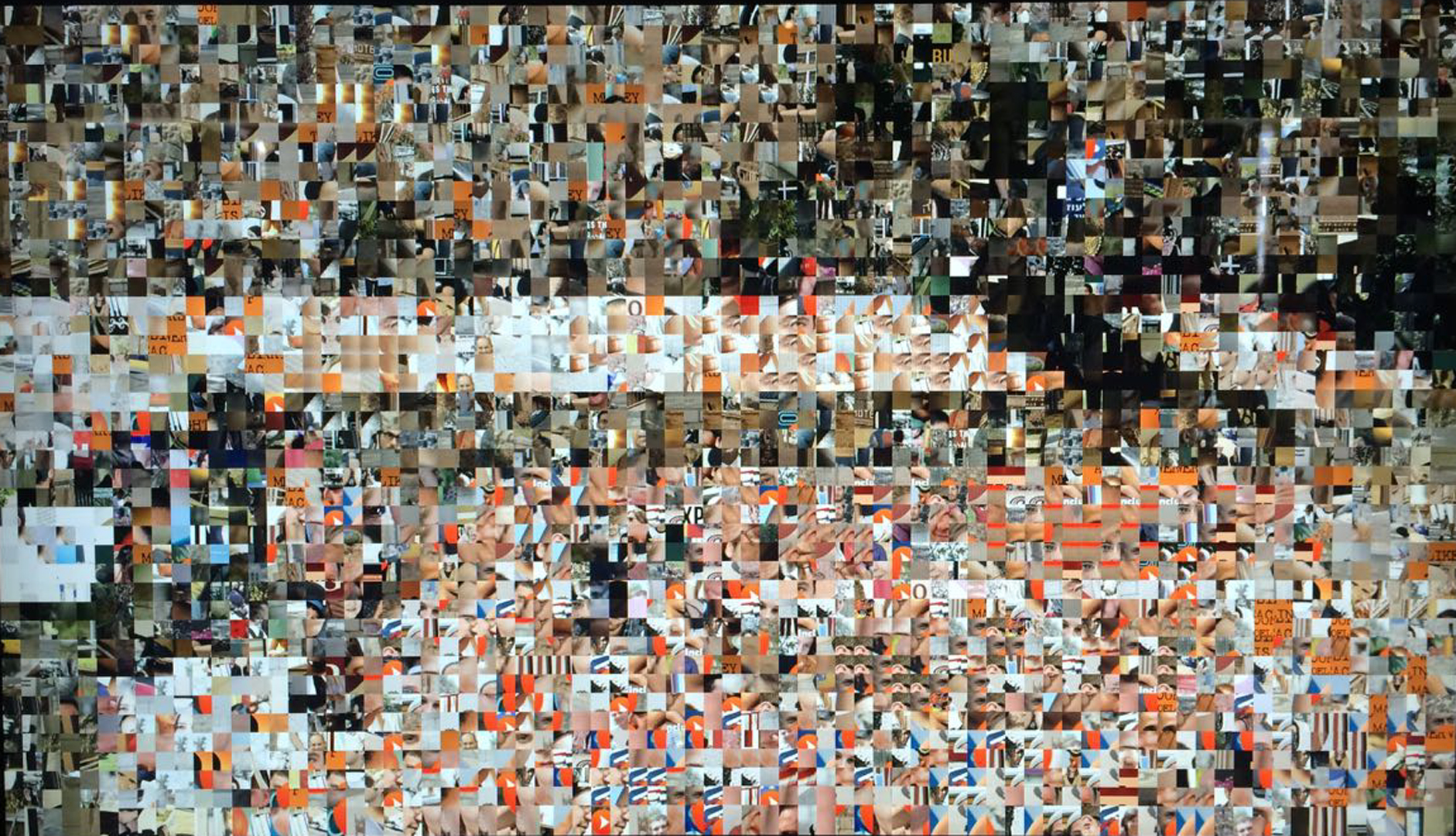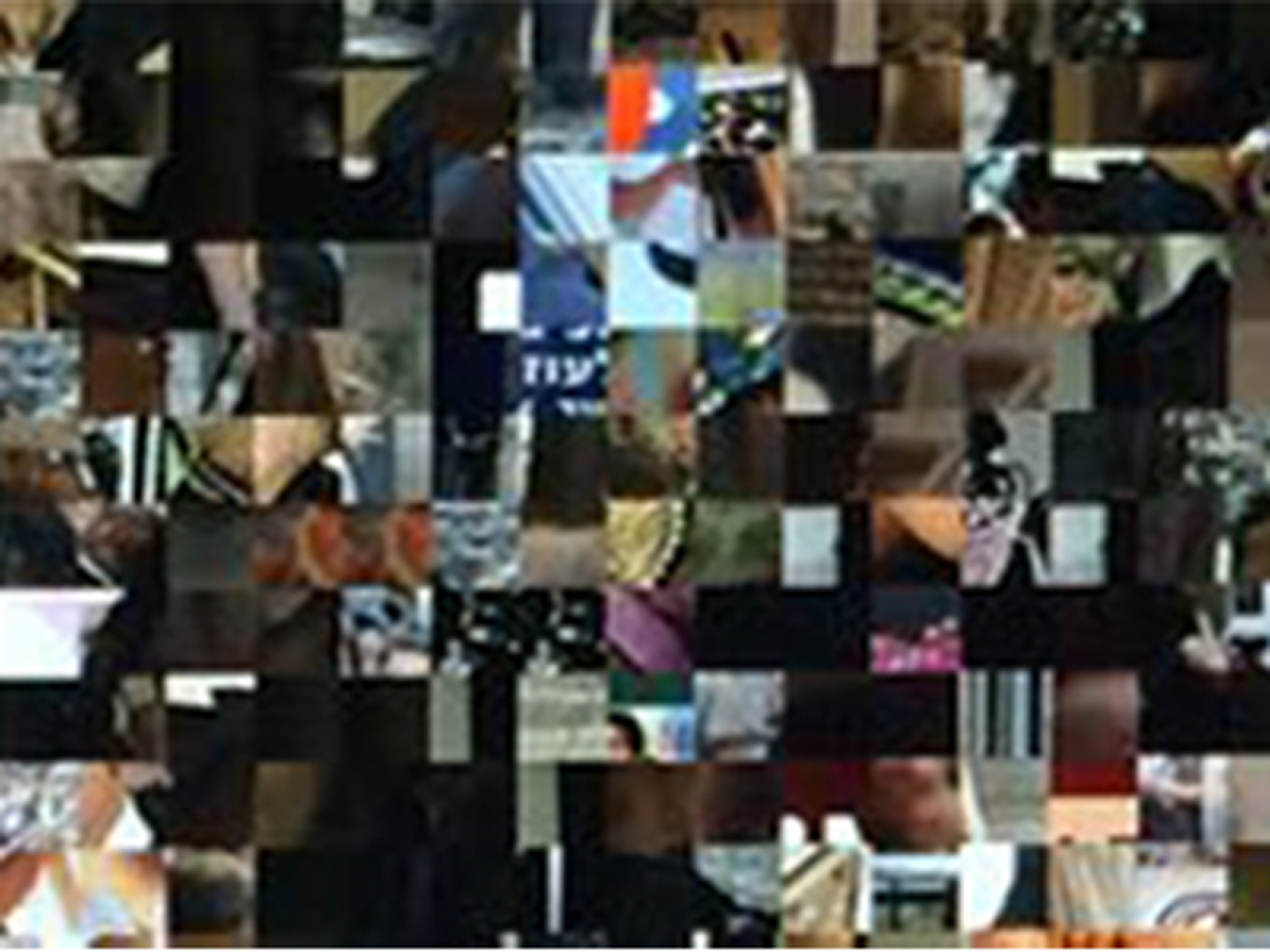Ways of Seeing
Symposium:
Session Title:
- Audiovisual Performance
Presentation Title:
- Ways of Seeing
Presenter(s):
Venue(s):
Abstract:
Ways of Seeing is a dynamic installation driven by a real-time webcam feed combined with visual materials gathered using algorithmic data-mining techniques from publicly available web sites. The work seeks to make the viewer aware of the (normally transparent) ideological ‘lenses’ through which media present conflict.
Ways of Seeing, deliberately named in reference to John Berger’s important contribution to our understanding of how visual information is given cultural meaning, is an installation designed to make viewers aware of two contrasting aspects of digital (re)mediation. On the one hand, the ideological gaze, the filtered narratives of power, causation and interpretation that underlie the construction of meaning and on the other, the opportunities for provocation and dissent provided by the affordances of modern digital networked information systems.
The work is a part of a longstanding project using metadata and dynamically sourced image materials to produce a dynamic library of contextualising tools for use in digital artworks. In the current installation, image materials are collected from four contrasting groups of news sources, selected for different perspectives on the status and future of an area of protracted and intense conflict. In current case, the artist has chosen Al Quds (Jerusalem), but the specific location is used as an exemplar of a locus of conflict rather than the focus for an exercise in political intervention (although this would be a perfectly proper artistic intention). The image collections are deliberately focused on news and campaigning organisations from a range of positions, images are grouped by the collection system based on their context which includes the organisation they are sourced from.
These four image libraries then form the basis of a set of four ideological ‘lenses’; visual materials selected in their original publication with an explicit bias which are then cut up and used in fragmentary form to ‘paint’ four copies of a live webcam stream of the conflict zone itself, individual pixels from the webcam are replaced with an image fragment with the same average colour value. This substitution (degradation) prevents the webcam feed form being ‘read’ as reportage by continually drawing attention to the means of presentation; as Jay David Bolter would put it, the real-time view is remediated rather than being presented transparently.
The four ‘alternative remediations’ of the same live webcam stream are presented next to each other on monitors, each employing materials drawn from a different bias-selection criterion. From a distance, the four views look largely similar (Fig. 1, 2), but close up, the differences in detail can be clearly seen (Fig. 3). The viewer, acknowledging the ostensible content (the area in view) is thus encouraged to examine the specific detail in each re-visioning; to look closely at the fragments of ideologically charged material in which the different versions of the overall image are expressed. The piece is thus a metaphor for the ways a given situation can be observed from different ideological viewpoints. At a higher level, the piece also exemplifies the opportunities contemporary digital technology provides for those interested in making socially related digital art.
Those same tools of network traversal, data mining and digital appropriation which permit the monitoring and identification of activists and the blunting of progressive communication also can be shown to provide artists with access to the raw materials and trails of influence which enable them to expose and subvert mechanisms of control and reaction. The same commercial demands which demand programmers and system architects facilitate the closed-system applications central to corporate social media business models also lead to the production of software tools which can be used to evade the controls on content and access imposed in previous iterations of network regulation.
Ways of Seeing was first exhibited on 1st September 2015 at the DRHA2015 conference in Dublin, Eire.
Acknowledgements:
References
- John Berger, Ways of Seeing (Reprint edition. London: Penguin Classics, 2008).
- Jay D. Bolter. & Richard Grusan, Remediation: Understanding New Media (New edition. Cambridge and London: MIT Press, 2000).
- Jeanette Hofmann, The Libertarian Origins of Cybercrime: Unintended Side-Effects of a Political Utopia, (Rochester, NY: Social Science Research Network, 2010).







